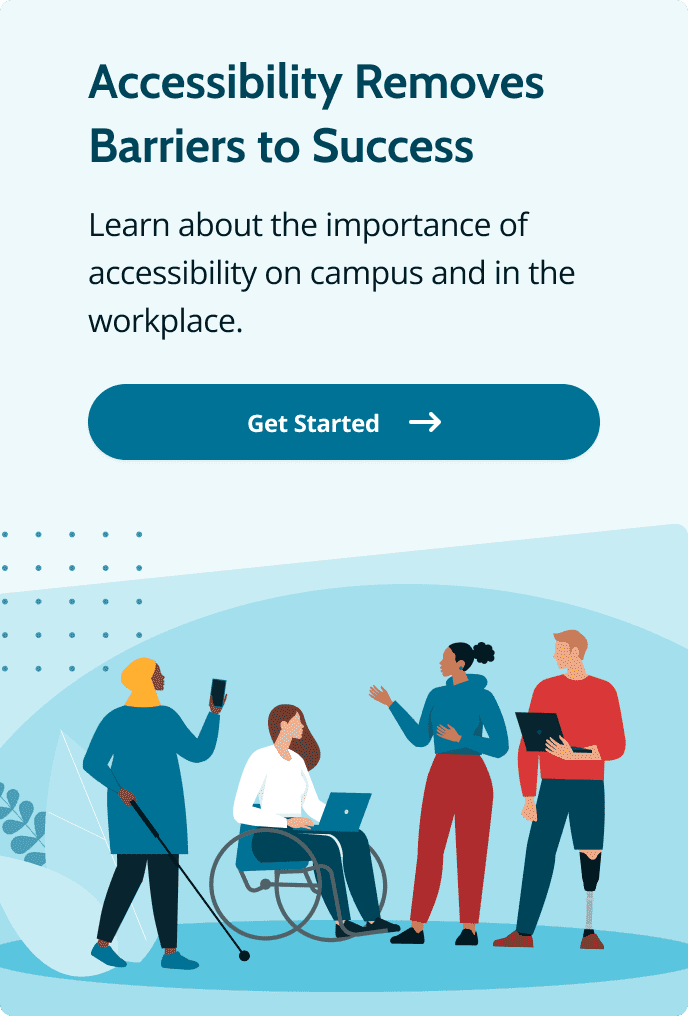The Language of College Is Complex. This Is Why Language Access Matters for ELL Students
Writer
Editor, Reviewer & Writer
Writer
Editor, Reviewer & Writer
- Despite its history, language access in higher education favors native English speakers.
- Language accessibility issues can impact the success of ELL students in college.
- There are multiple ways colleges can diversify language to be more accessible.
- If colleges value linguistic diversity, accessible language should be top priority.
The History of Language Accessibility (or Lack Thereof) in Higher Education
Question: In what facet of U.S. society would someone encounter these words?
Bursar. Unsubsidized. Degree audit. Credit thresholds.
Answer: Colleges, and that is a problem.
Many people may assume that colleges and universities started in the United States since the U.S. is home to around 6,000 colleges and universities.
However, the earliest universities emerged from ancient Roman and Greek societies, eventually taking more formal shape in European countries like Germany and Italy.
Eventually, the first institution of higher education established in the United States was Harvard University in 1636. Since then, higher education has greatly expanded in the United States.
The reason that I am recalling higher education history is not to highlight how long the system has been in place. Instead, I am calling attention to the fact that even though U.S. higher education was deeply influenced by other countries, the U.S. higher education system is not linguistically diverse.
For as long as the higher education system has existed in the United States, English has been its primary language. And not only has English been the primary language, at times, it can be very complex for students pursuing higher education who are from a different country or learning English as a second language.
Consider the words I mentioned earlier like bursar, unsubsidized, degree audit, and credit thresholds. These terms are very complicated for the average adult to understand, much less a high school student looking to apply to college. These words also lead to many questions:
- Why is college language so difficult?
- Why is college language so unique?
- How do students learn this language?
For me, and on behalf of English language learners (ELLs) everywhere, I have another question:
Why isn't college information available in non-English languages?
Researchers have long found that English language learners in the United States do not access higher education at the same level of their native-speaking English peers.
We know that higher education can be a transformative experience with the ability to lift people from poverty. Men who have earned a bachelor's degree make about $900,000 more in median lifetime earnings than those with only high school diplomas or similar credentials. Women who earn a bachelor's degree make about $630,000 more in median lifetime earnings than high school graduates.
From here, we begin to understand that generations of English language learners have been excluded from the U.S. higher education system on the basis of language.
Simply put, the language of college was not written for English language learners.
That must change.
How Language Access Impacts ELL Students
I am not the first person to advocate for the higher education system to simplify its language and translate it beyond English. Early studies of college access in the 1970s and 1980s found that many English language learners and their support systems desired college access materials in Spanish and other languages.
In the decades since that foundational work, little has changed.
Recent studies suggest that less than 5% of colleges and universities make admissions information available in non-English languages. Moreover, the admissions information that many colleges and universities do share with prospective college students is written above the 13th grade reading level.
That's right. Colleges and universities expect high school seniors and incoming college students to read above the 12th grade level to understand how to apply to college.
This may help explain why first-generation college students must overcome so many more information barriers than their peers. First-gen students may not have a cultural translator — a former college student — to help break down the language of college.
Colleges and universities also expect students to be fluent in English. This is particularly troublesome since the United States has rapidly diversified in terms of what languages its people speak. Now more than ever, more people in the United States are non-native English speakers, many of them prospective college students.
Additionally, colleges and universities are seemingly ignoring the role of family and community in the decision-making process of college students.
In many cases, if a student's family or community understands the college process and develops a sense of trust in the college, the student will attend that college. If not, the student will not leave home and instead forgo the college experience.
Yet, colleges and universities continue to communicate in English and (largely) English only. And in doing so, colleges and universities are failing to communicate with not only prospective college students who are English language learners but also their families and communities.

How Can Colleges Make Language More Accessible?
There are multiple ways colleges can solve this issue for ELL students.
First and foremost, they must learn to value non-English speakers and their culture, their way of being, and their languages.
Colleges and universities may insist that instruction is in English, as English is the widest spoken language in the United States. Colleges and universities may view it necessary for their students to know English to be successful at their institution and in the U.S. workforce.
However, insisting upon complex English is also insisting that other languages do not have value or cannot find a place within higher education. That is simply untrue.
Texas State University, a Hispanic-serving institution, created a bilingual admissions process on its website to both increase access to the institution and place value on the Spanish language.
The school's website includes admissions information in English and en Español to help English language learners and their families or communities learn more about the college admissions process.
To date, Texas State University is one of the only institutions of higher education in the world to publish bilingual admissions information on its website.
Yet, Texas State's bilingual approach does not solve the language accessibility issue.
Why are words like "bursar" even necessary? Why not say "cash office" instead? This is a much more wicked problem for English language learners.
Language accessibility means providing simple, translated information so that people from diverse language backgrounds can access the same information as those within a dominant language group.
In this regard, to practice linguistic equity, colleges and universities must work side by side with native English speakers and ELL students and their families to explore what is complicated and how it can be simplified.
There are simpler words that can be used instead of "degree audit" or "credit threshold" that can also be translated beyond English.
And if colleges and universities truly want to make college accessible for all students then they would want to make better efforts toward language access.
At the very least, we can hope so.
Meet the Author

Z. W. Taylor, Ph.D.
Dr. Z.W. Taylor is an assistant professor at the University of Southern Mississippi. Dr. Taylor has worked in education for 13 years as a pre-college counselor, assistant director of admissions, and admissions analyst, specifically aiming to serve low-income students and students of color.







